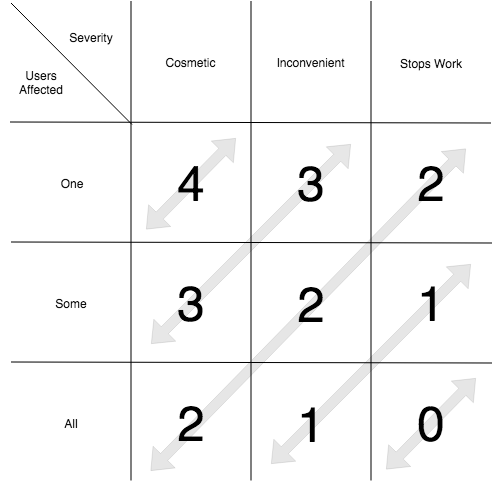Sometimes, the fix for a severe bug may not be a priority. If you're a crypto exchange and your system allowed a duplicate deposit to happen once, human intervention can be the best cost-benefit solution if the cost to fix the problem is high.
This trade-off between Severity and Priority reminds me of a model a colleague showed me recently. It's called The Priority Matrix, a bi-dimensional model that can be used to prioritize bugs based on how many users it affects and the severity.
The single duplicate deposit issue described earlier falls into the category of inconvenience that affects one user. Therefore, priority 3.
Not every bug is worth fixing
source: The Problem You Solve Is More Important Than The Code You Write

No comments:
Post a Comment